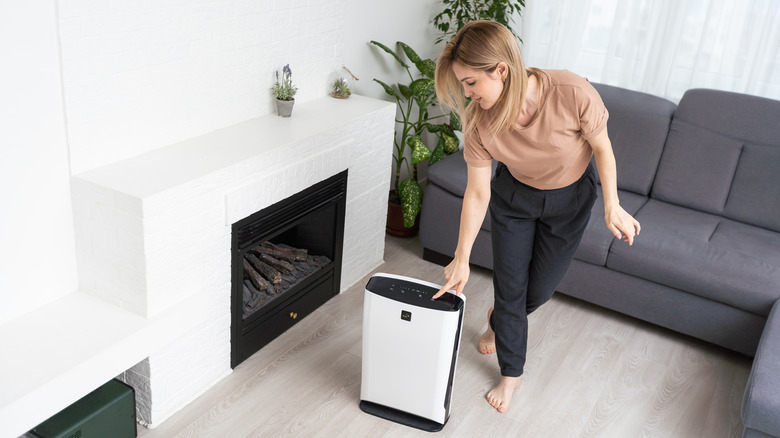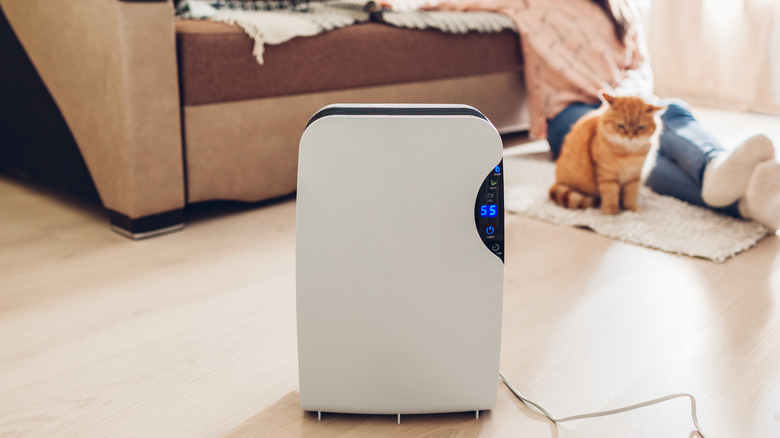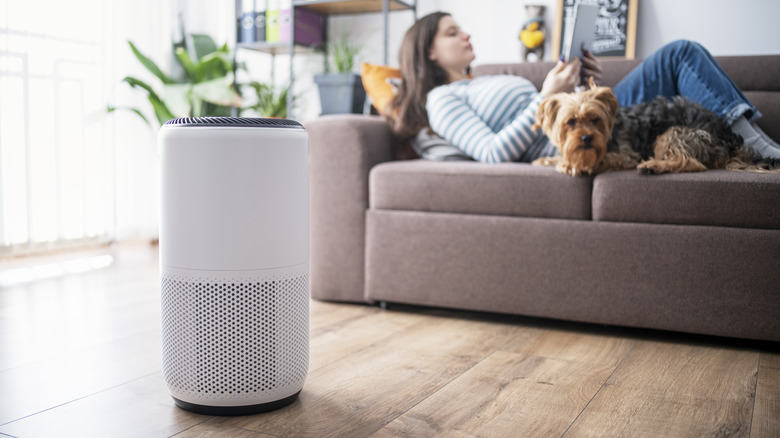Dehumidifier Or Air Purifier: Which Is The Better Choice For Your Home?
Dehumidifiers and air purifiers are often considered the one and the same. After all, their collective objective is to enhance your home's indoor air quality (IAQ) and improve your health. But both devices go about achieving their goal in a different manner. To elaborate, dehumidifiers improve air quality by lowering the humidity levels indoors. On the other hand, air purifiers pluck out the pollutants from the air so you can breathe a little better. That being said, which is the better choice for your home?
A dehumidifier is a better option than an air purifier if you live in a region with high humidity, as it'll lower the moisture content in the air and inhibit the growth of mold and mildew. Such devices are one of the fastest ways to dehumidify your home in the summer. They promote sweat evaporation from exposed skin to make you feel relatively cooler. Similarly, it'll speed up the dreaded clothes drying process during the cool winter period. Comparatively, an air purifier is best suited for individuals prone to allergies or other respiratory issues, like asthma. This is because they can use an air purifier to remove dust more efficiently. In fact, models with a HEPA (high-efficiency particulate air) filter can remove 99.97% of allergens from the air. Since both devices are necessary to maintain your IAQ, choosing between the two can be a little difficult if you don't understand their specific purpose and how they can help you.
Dehumidifiers help manage your home's humidity level
According to the United States Environmental Protection Agency, the ideal humidity range indoors is between 30 and 50%. So, if the moisture level inside your house goes beyond the ceiling limit due to the climate or inconspicuous water leaks, it would invite a host of trouble inside your home, including moisture-loving mold and mildew. Additionally, you'll have to deal with structural damage, rotting wooden furniture, and a musty odor indoors. A dehumidifier can come in handy in such situations, as its key role is to trap excess moisture in the atmosphere and circulate dry air around the room.
The exact process depends on the type of dehumidifier you choose. For instance, a compressor model takes in moisture-laden air from a room and passes it along cold coils. This causes the vapor in the air to condense and drip down to a water internal collection tray (or tank). Then, the air trapped inside is heated again to match the current room temperature before being pushed out of the device. As such, these models are ideal for homeowners experiencing a warm climate for the better part of the year. On the flip side, a desiccant model is fit for cool climates. It draws in humid air in the same manner, but removes the vapor content using a dedicated desiccant wheel. The leftover air is warmed to about 50 degrees Fahrenheit more than the room temperature prior to circulation.
Air purifiers filter and neutralize pollutants in the air
The United States Environmental Protection Agency states an individual spends 90% of their time indoors. This means you constantly breathe in air saturated with dirt, dust mites, pollen, pet dander and hair, smoke fumes, mold spores, and VOCs (volatile organic compounds). However, with 26.8 million U.S. residents suffering from asthma (per the American Lung Association), it's imperative homeowners breathe in air free of allergens and contaminants. This is where an air purifier comes in. These devices are designed to extract the pollutants from the air and circulate clean air back into the room.
Air purifiers draw in air through a fan and then move it through multiple layers of filter (usually three) to give you purified air. Each type of purifier is outfitted with a specific filter, aka layer of defense, to sanitize the air around you. To illustrate, a HEPA air purifier's main job is to trap all the pollutants in the air, including ones that aren't visible to the naked eye. But the harmful organic particles must be bigger than 0.3 microns. Similarly, activated carbon air purifier units employ carbon treated with oxygen to help them trap pollutants and neutralize odors. This is a good option for people dealing with varied smells throughout the day. Alternatively, UV purifiers employ ultraviolet light to neutralize microscopic germs in the atmosphere. Whichever purifier you choose, select the best spot in your home to put an air purifier for the desired results.


